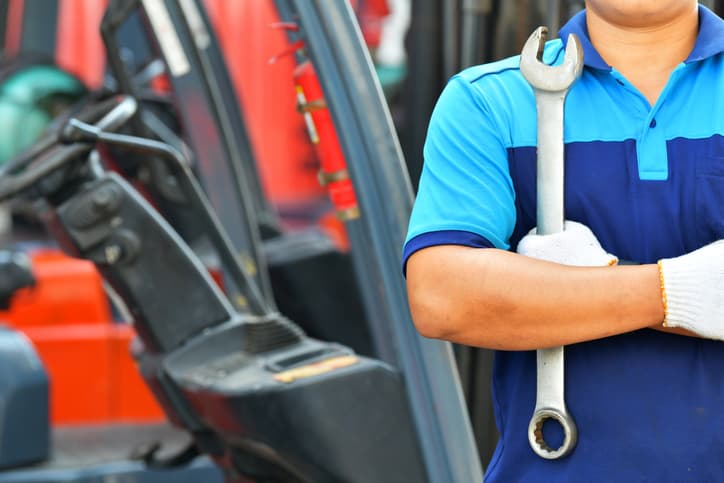What Are The Main Causes Of Accidents In The Workplace?
Keeping Your Workplace Safe

Accidents in the workplace are not uncommon, but you should do everything you can to protect your members of staff should an accident occur. This could include making sure that the workplace is kept clutter-free to prevent trips and falls. It could also include ensuring that your staff wear the correct safety equipment. You should have business insurance so that, if an incident does take place, you and your staff will be protected.
What causes accidents at work?
Below, we’ve listed some of the main problems that could occur and how you can prevent accidents in the future.
Hazards
There are tons of hazards in the workplace that can result in trips, slips, falls or other injuries. The main hazards that can be found at work are:
- Spills
- Obstructions
- Uneven flooring
- Broken handrails
- Trailing wires
- Inadequate lighting
The above hazards can become even more dangerous if you’re carrying heavy equipment. If you’re frequently lifting heavy items, the floor should be clear of objects and shouldn’t be slippery or uneven.
Incorrect safety wear
Accidents in the workplace can occur if members of staff aren’t wearing the correct safety gear. As the employer, you should make sure that your employees have suitable safety equipment, that it fits properly and that they’re wearing it on a regular basis. Safety items could include:
- Gloves
- Steel toe cap boots
- High-vis jackets
- Eye protection
- Dust masks
- Hard hats
- Ear protection
- Safety harnesses (if working at height)
You should regularly check the equipment to make sure that it’s still suitable and doesn’t need replacing. For example, eye protection can become scratched to a point where the employee can no longer see out of them clearly.
Incorrect ergonomics
For people who work in offices, it’s important that ergonomics is thought about and put in place. You should make sure that all of your employees are comfortable and that they have the correct equipment. Some people may require backrests, wrist rests or foot rests. Staff should also be allowed to take short, frequent breaks throughout the day to avoid the risk of repetitive strain injury.
Slippery surfaces
One of the most common causes of trips, falls or slips in the workplace is slippery floors. The floor could be slippery from a water spillage, oil spillage or other form of liquid. If the spillage isn’t cleaned up properly, someone could fall. This is why it’s also a Health and Safety requirement to put out ‘wet floor’ signs to alert employees or customers of the potential hazard.
Liquid on the floor is most common in kitchens, rooms with appliances such as dishwashers, or coffee shops.
Machinery
Anyone who works with specialised machines know how powerful they can be and how easily something could go wrong. For many businesses, heavy machinery is a requirement in order to produce finished products that can be sold on. It’s not viable to get rid of the machines. Instead, staff should have adequate training on any machine before being expected to use it. The correct safety equipment should also be worn at all times.
How can accidents be prevented?
By putting certain measures and safety features in place, you could protect your staff and your customers from injury.
The Irish Health and Safety Authority estimate that every working day, around seven people are hurt in slips, trips or falls at the workplace. However, it’s likely that these accidents could be prevented. Good quality surfaces and the correct footwear could prevent slipping or tripping. There shouldn’t be any loose or uneven flooring that could trip people up, such as carpet edging that’s curling. For slippery floors, anti-slip mats could be put down, particularly in more dangerous places like at the top of stairs or in heavily congested areas, such as a busy shop floor.
When it comes to the correct footwear, the Health and Welfare at Work Act 2005 outlines that employers should ensure that the Personal Protective Equipment (PPE) is in good working order and that equipment is replaced when it is no longer in usable condition. The PPE should be frequently reviewed to make sure it is up to standard. This includes making sure that the equipment fits the member of staff properly. For example, hard hats that are ill-fitting may fall off and protective masks that are too loose may not be doing their job properly.
For staff that work in an office environment, the correct equipment should be supplied, particularly if the employee has any ongoing health issues, such as back problems or conditions such as hypermobility, which can affect the joints. As the business owner, it’s your responsibility to make sure that all members of staff are comfortable and have everything they need. The situation should be monitored closely to ensure that nothing changes. If a member of staff asks for something, you should do your best to supply it. This could even include anti-glare screen protectors if there’s too much light shining on the screen.
When staff are using machinery, the correct guards should be in place to ensure that debris or dust is contained. Any tools and equipment should be well-maintained so that there is no danger of a malfunction occurring. Emergency stop buttons should be located near the machines in case it’s needed. Training must also be provided before any member of staff can use the machine. In the first few instances of use, the employee must be assisted by another employee who has experience with the machine. In some cases, it may be necessary for staff members to remove any jewellery or accessories, such as ties. Long hair should be worn up to prevent it from becoming caught in the machine.
No matter what the hazard is, your staff should all be suitably trained so that they can help to prevent accidents in the workplace too.

